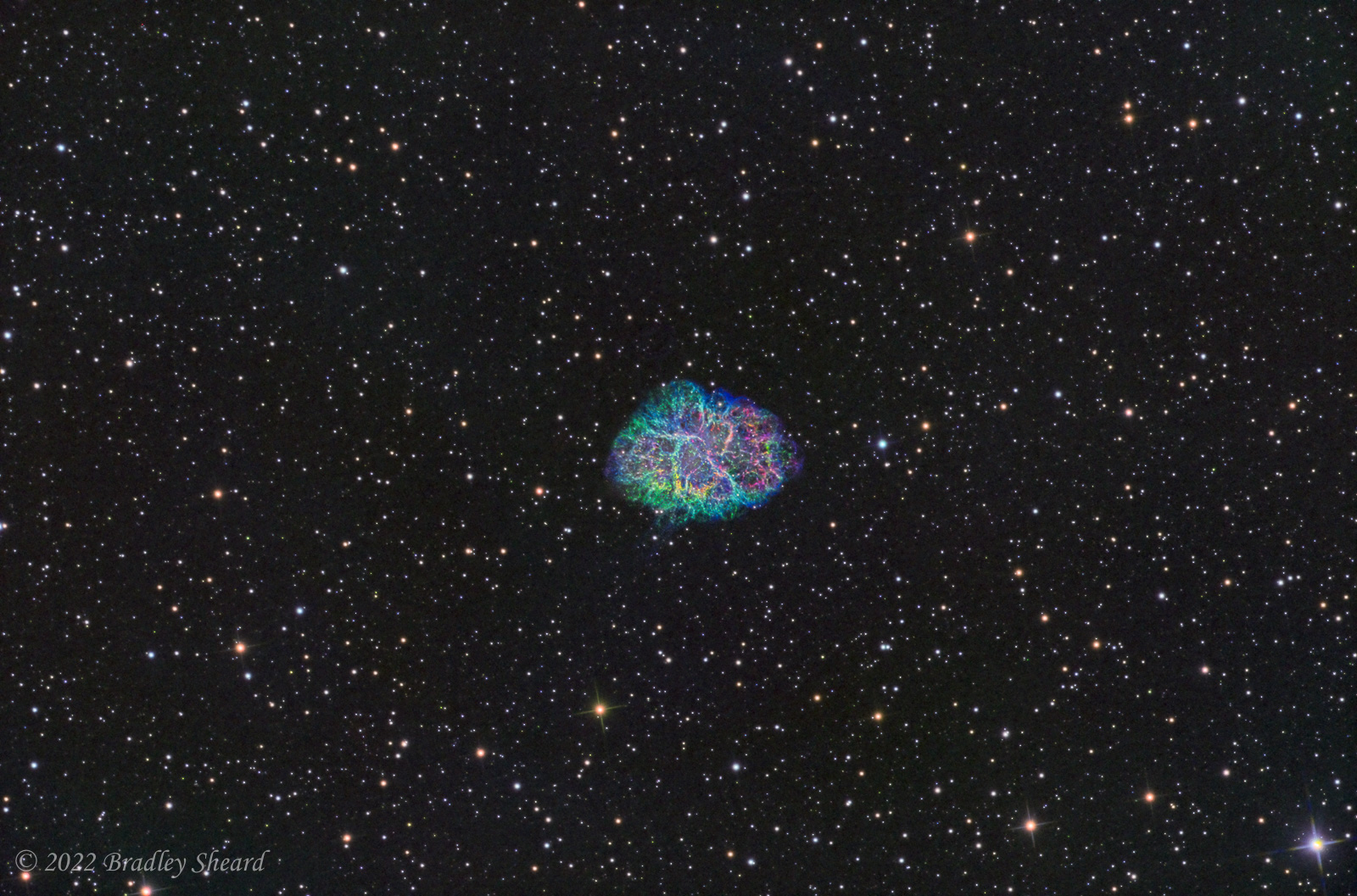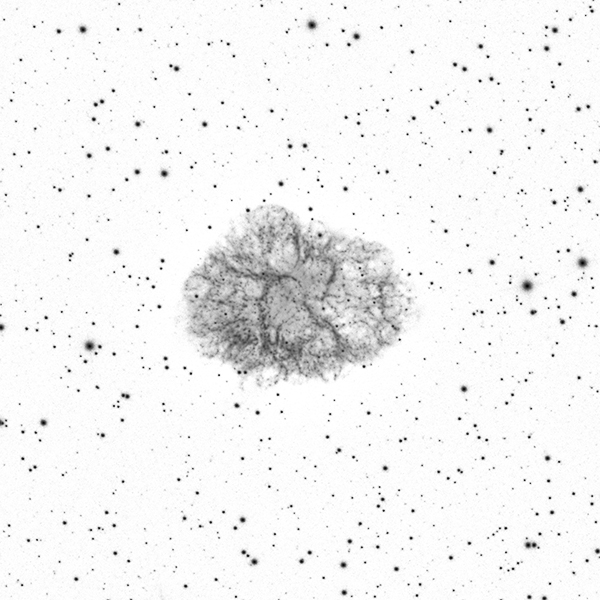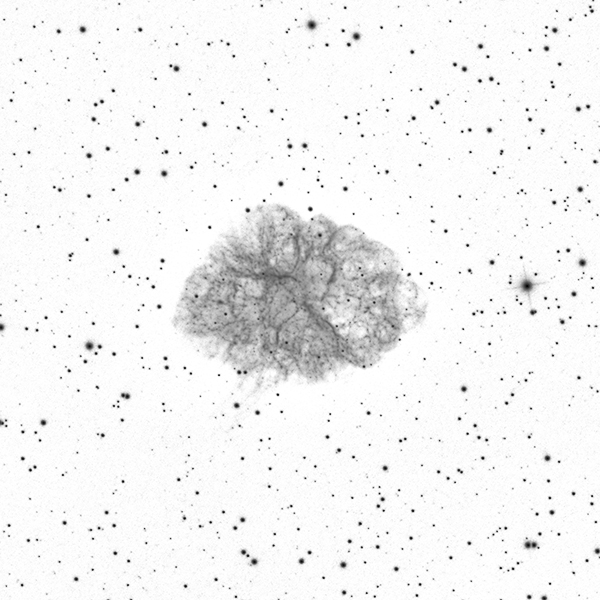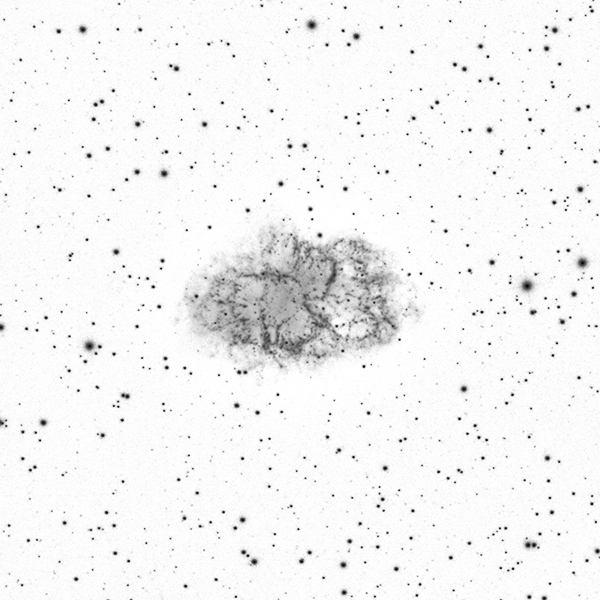M1 "Crab Nebula" in the Constellation Taurus | |||
| « Previous | Back to Astrophotography Gallery | » Next | |
| Back to Supernova Remnant Gallery | |||
M(essier)1, commonly called the "Crab Nebula," is the remains of a supernova explosion witnessed by Chinese (and possible Native American) astronomers in the year 1054 A.D. This SNR is the result of a type II, core-collapse supernova that occurs when a star greater than 8-10 solar masses runs out of fuel. The expanding shell is nearly 1000 years old. Stars with initial masses greater than 8x the sun's have an interesting end-of-life story. After exhausting the hydrogen fuel in their core, they expand into red giants, while their cores contract and heat up, eventually transitioning to fusing helium into carbon and oxygen in the core, while a shell of hydrogen surrounding the core continues to create helium and feed the core. After the helium is used up, these massive stars have enough gravity to achieve temperatures and pressures high enough to successively fuse heavier elements, eventually creating a nickel-iron core surrounded by shells of successively lighter elements. But iron is the end of the line, as fusing heavier elements requires the addition of energy, rather than liberating energy. Once central fusion ends for good, the core rapidly collapses (on the order of seconds!), heating up and then rebounding in a tremendous explosion that releases an amount of energy rivaling that of an entire galaxy--this explosion is called a supernova. The remaining core collapses into either a neutron star (or pulsar), or if massive enough, into a black hole. The explosive outflow of gas and elements enrich the interstellar medium and provide the seeds for future stars and planets. Some of those expelled elements get excited by the pulsar and glow in the characteristic light of emission nebula, and this glowing cloud is what we can photograph as a Supernova Remnant. |




